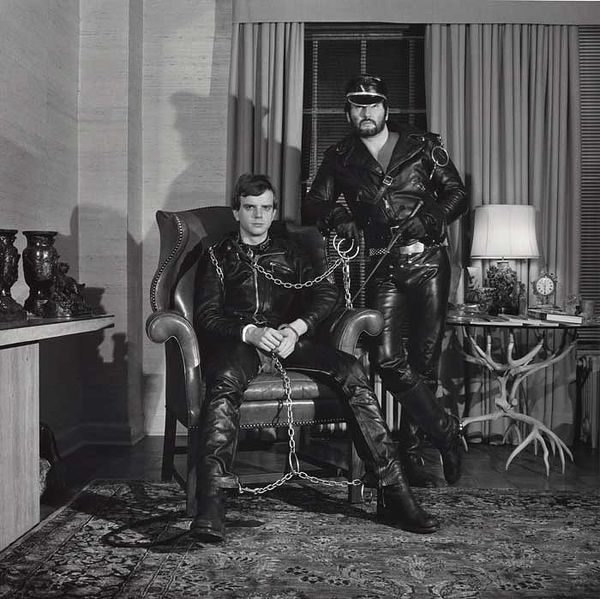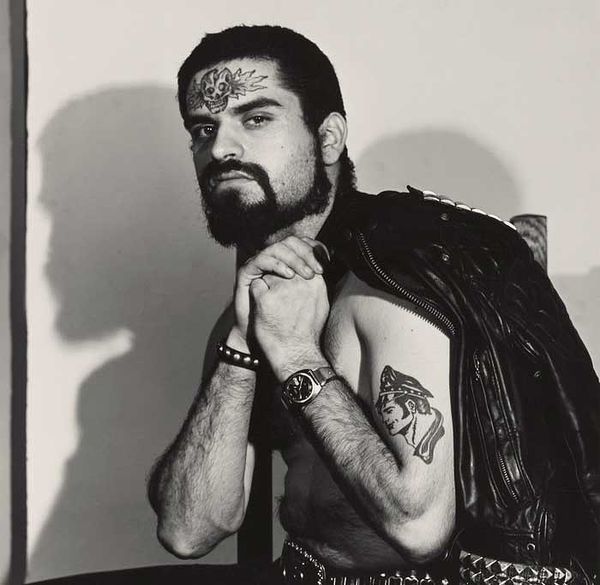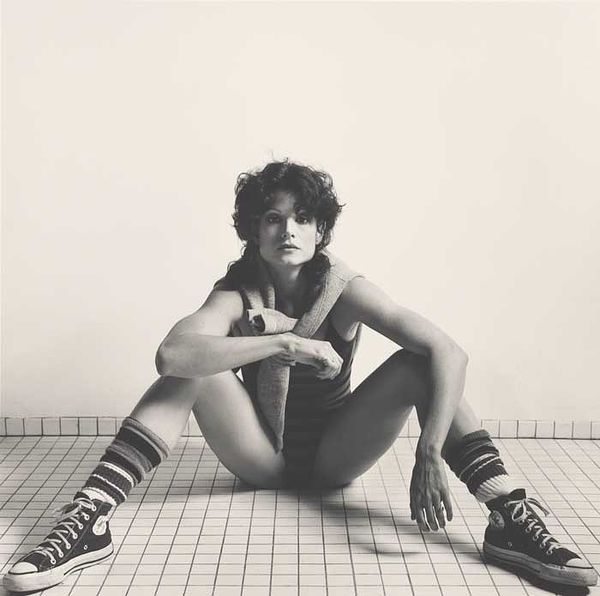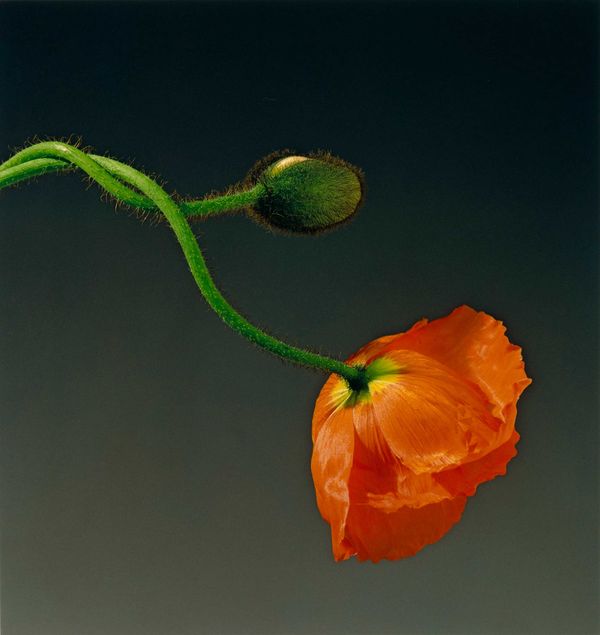Robert Mapplethorpe, Poppy, 1988, dye imbibition print, jointly acquired by the J. Paul Getty Trust and the Los Angeles County Museum of Art, partial gift of the Robert Mapplethorpe Foundation; partial purchase with funds provided by the J. Paul Getty Trust and the David Geffen Foundation, © Robert Mapplethorpe Foundation
This month, Los Angeles will celebrate the legacy of Robert Mapplethorpe when the J. Paul Getty Museum and the Los Angeles County Museum of Art jointly stage a landmark retrospective of the artist’s work. After the exhibition closes in Los Angeles, it will travel internationally to three other museums, cementing the artist's transformation from a controversial figure to one of our most consequential contemporary image-makers.
Britt Salvesen, curator and head of the Wallis Annenberg Photography Department and the Print and Drawings Department at the Los Angeles County Museum of Art, spoke to us about Mapplethorpe's photographic process, his relationship to his subjects and love of "the perfect moment."
Phillips: This feels like an extraordinary moment for both LACMA and Robert Mapplethorpe’s legacy. What excites you most about the exhibition?
Britt: One of the most exciting things about this exhibition is the opportunity to reveal the rich resources of the Mapplethorpe archive: early drawings, collages, and constructions; working materials, documentation, and contact sheets; and never-before-exhibited photographs from his editioned body of work. These materials provide a broader context for the iconic images that brought him fame.
Phillips: This isn’t the first retrospective of Mapplethorpe’s work. What makes this exhibition so significant?
Britt: This exhibition will reveal new aspects of Mapplethorpe’s life and art by presenting his iconic photographs with lesser known works, pulled from the Robert Mapplethorpe Archive, jointly acquired by the Getty and LACMA in 2011. More than any previous Mapplethorpe exhibition, this historic collaboration between two leading art museums will trace the artist’s working methods and materials, presenting the improvisational, experimental aspects of his practice alongside the refined perfection of his prints. Some of the early constructions and collages that will be on view have never before been shown in a museum exhibition.
The works on display provide new context for understanding the key genres that he pursued: portraiture, the nude, and still life. His personal connections to sitters, and his professional ability to manage a successful studio, will be demonstrated through rarely seen correspondences, books, and other ephemera, including those from the artist’s archive in the Getty Research Institute. This will be the first major traveling retrospective in the United States since the landmark exhibition The Perfect Moment, organized in 1988 by the Institute of Contemporary Art in Philadelphia.

Robert Mapplethorpe, Brian Ridley and Lyle Heeter, 1979, gelatin silver print, jointly acquired by the J. Paul Getty Trust and the Los Angeles County Museum of Art, partial gift of the Robert Mapplethorpe Foundation; partial purchase with funds provided by the J. Paul Getty Trust and the David Geffen Foundation, © Robert Mapplethorpe Foundation
Phillips: For individuals who are not already familiar with the range of Mapplethorpe’s work, how would you contextualize his more graphic male nudes – like the images we see in his X and Z Portfolio?
Britt: The most graphic sadomasochistic scenarios are found in the X portfolio (published 1978). Mapplethorpe was careful to insist that he was a participant in such activities, not merely an observer, but they are not candid snapshots – they are composed for the camera. He wanted to bring the subject matter from pornography into fine art. These images can be connected to his more familiar studio portraits and still-lifes through his own stated aim to create "perfection in form." In most examples, he limits extraneous elements and concentrates on gesture, light, and shadow.
Phillips: The formal elements of Mapplethorpe work are very classic – from the subject matter itself to the lighting to his use of the gelatin silver and platinum processes, among others. How do you rectify this with him being such a contemporary photographer?
Britt: The subjects and photographic processes that Mapplethorpe favored were indeed traditional, and this resulted in a kind of timelessness or essence that he valued. At the same time, he wanted to be seen as an artist of his time – if not a documentarian as such, then as an innovator moving photography forward and elevating its status in the contemporary art market. He did this through careful attention to presentation, design, and context, so his works are presented as objects.
The idea of perfection was a refrain of sorts for Mapplethorpe, who sought what he called perfection in form in everything from acts of sexual fetishism to the elegant contours of flower petals.

Robert Mapplethorpe, Nick, 1977, gelatin silver print, promised gift of the Robert Mapplethorpe Foundation to the J. Paul Getty Trust and the Los Angeles County Museum of Art, © Robert Mapplethorpe Foundation
Phillips: One of the hallmarks of Mapplethorpe’s work is his democratic approach to all subjects. Can this be traced back to his earlier more experimental work and studies or is that more a reflection of which images he chose to print as formal editions?
Britt: Mapplethorpe insisted that his primary subjects – portraiture, sex, flowers – be seen as "the same" in terms of refinement. This crystallized for him when he took up photography. The photographic medium allowed him to impose his vision on all his subjects.
Phillips: There is a possibility in the digital age to lose sight of the photograph as an object and not just an image. How would you describe the importance of seeing Mapplethorpe's work in person?
Britt: It's true that we have become accustomed to thinking of photography in terms of transmissible data – images rather than objects. Mapplethorpe's work is reproduced frequently in books and online, but the prints themselves exceed even the best reproduction. He had very specific ideas of about tonal range and contrast, and he worked closely with his printers to maintain absolute consistency. I think the exhibition will trigger renewed appreciation of gelatin silver printing and its subtlety.

Robert Mapplethorpe, Lisa Lyon, 1982, gelatin silver print, gift of the Robert Mapplethorpe Foundation to the J. Paul Getty Trust and the Los Angeles County Museum of Art, © Robert Mapplethorpe Foundation
Phillips: Mapplethorpe worked across many mediums and in many ways his image-making is as much contemporary art as it is photography. Why did you call the exhibition 'The Perfect Medium'?
Britt: The idea of perfection was a refrain of sorts for Mapplethorpe, who sought what he called perfection in form in everything from acts of sexual fetishism to the elegant contours of flower petals. For him, photography was the perfect medium for the contemporary world, intimate and immediate, a means of seduction, play, and control. Among his favorite subjects were the artists, musicians, and other performers he first encountered in the downtown art scene in the ’70s. He commented that photography was "the perfect medium for the ’70s and ’80s, when everything was fast. If I were to make something that took two weeks to do, I’d lose my enthusiasm. It would become an act of labor and the love would be gone."
His love of the perfect moment is the core of his art. The LACMA exhibition explores this quest for perfection through the full breadth of Mapplethorpe's work, from early unique images captured with a borrowed Polaroid camera, which reveal his observational acuity and his ability to be in the moment, to images and ephemera relating to his first breakout exhibitions, including a joint exhibition at The Kitchen and Holly Solomon Gallery in 1977.
